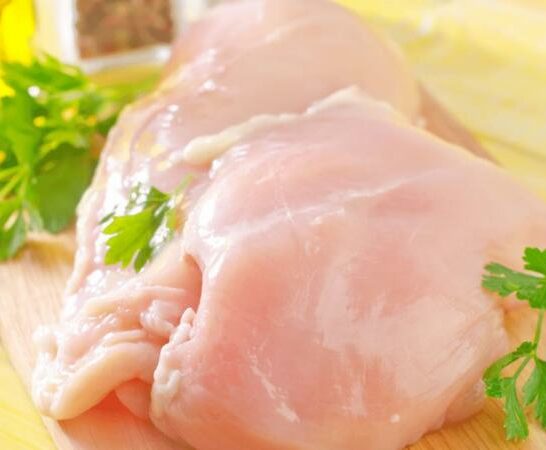What are the veins in chicken?
Chicken is a meat that you never want to undercook.
Undercooked chicken puts you at a very high risk of food-borne illnesses.
You can check to see if your chicken is cooked with a combination of two methods.
Cooked chicken should have a temperature of at least 165 ºF.
There also should be no pink when you cut into it.
However, if you check your temperature and find that when you cut into your chicken it is a pink or reddish color, typically you don’t need to worry.
Veins in Chicken
When cooking chicken, you may be alarmed to find that the inside of your chicken is pink, red, or even almost dark purple. This comes from cooking the veins in the chicken. You most typically see this with certain cuts of chicken that are cooked with the bone-in. When cooking your chicken, sometimes the hemoglobin in the veins can react. This causes them to be more pronounced, as long as your chicken has been cooked to temperature, it is safe to eat.
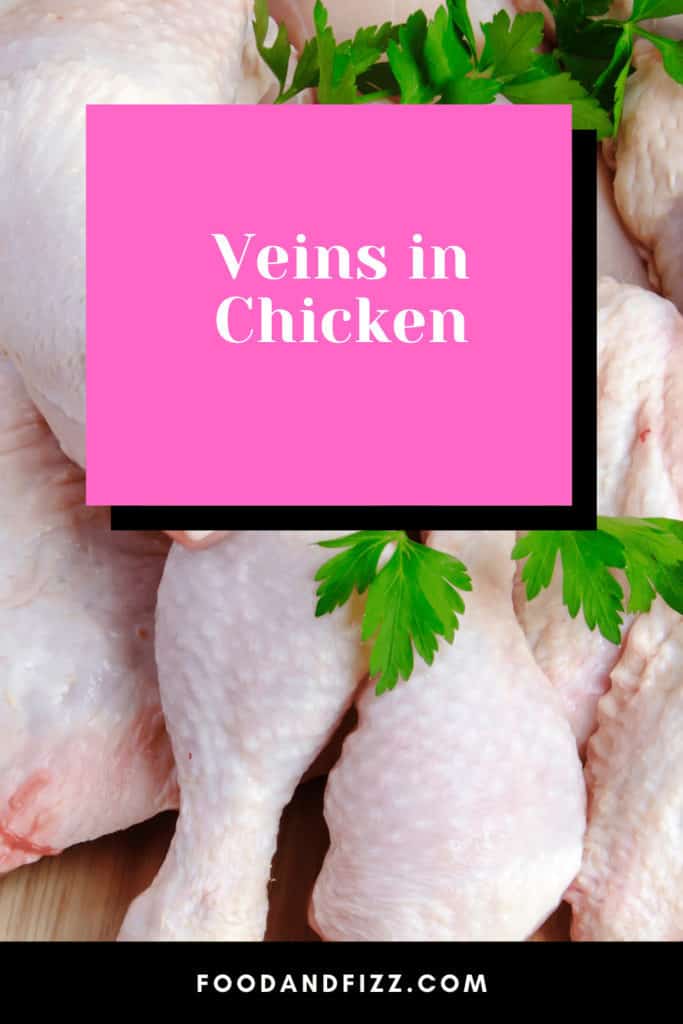
Where Veins Typically Occur in Cooked Chicken
Legs and dark meat areas of chicken have more naturally occurring sources of blood flow.
Extremities are areas that require more blood flow to function.
Because of this, when cooking legs, wings, or even breasts of chicken, you can end up with the presence of clear veins.
You are also more likely to get veins in your chicken if you are cooking it bone-in.
This is because the marrow can interact with the hemoglobin to change the color of the veins in your chicken.
When you’re cooking a whole chicken, it is more than likely that you will see veins in your cooked chicken.
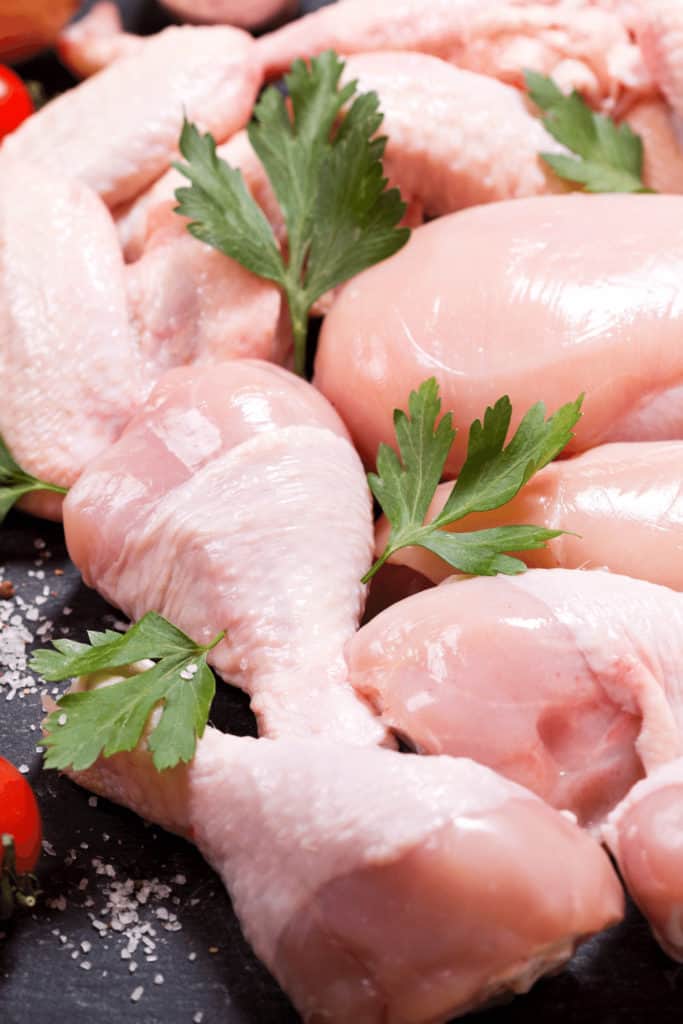
This is not only due to the cooking of the chicken, but also how it was prepared, and the sections of chicken that you are eating.
The appearance of veins can also appear in chicken that was overly bruised during the preparation process of the meat.
If you are looking to avoid veins, two of the most common cuts that tend to show veins more frequently are drumsticks and thighs.
If you want to avoid having veins in your cooked chicken, you can seek a better cut of chicken.
The better the butcher, the more likely you won’t see veins when cooking your chicken.
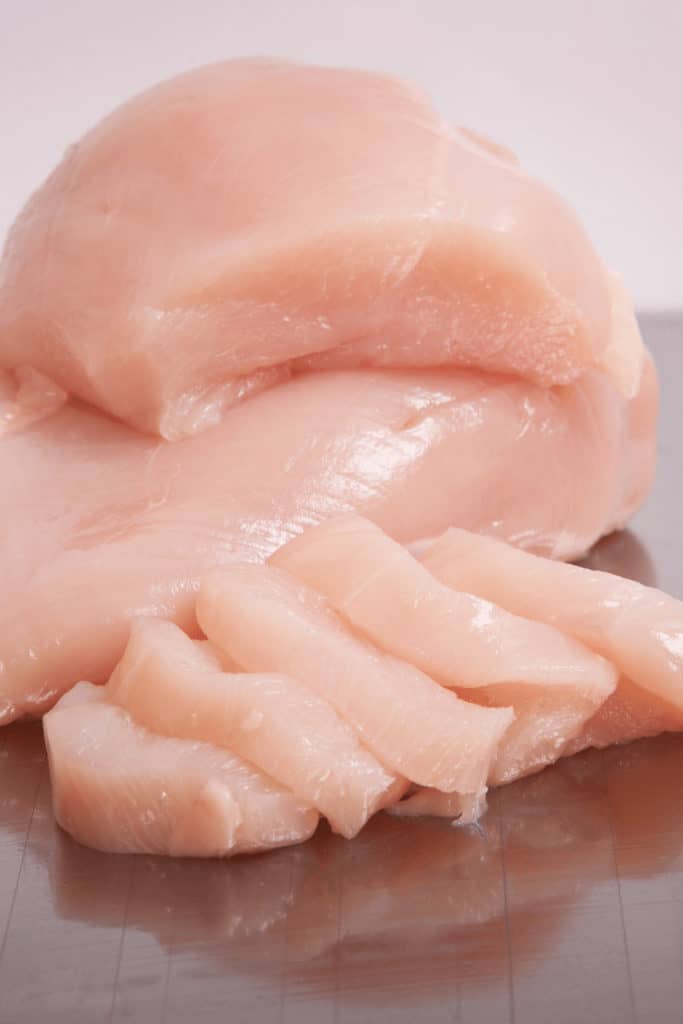
Making Sure Your Chicken is Cooked Through
Because cooked veins can alter the coloring of your chicken, concern does arise that your chicken is not properly cooked.
There are a few different ways that you can ensure that your chicken is cooked through even if you have a slight color change due to the presence of veins.
With chicken, you should always check the internal temperature of the pieces of chicken that you are cooking.
The internal temperature of your chicken should be at least 165 ºF. That is the USDA standard. If it’s any lower, you risk getting food-borne illnesses.
You can also tell if your chicken is cooked by cutting into it. While typically chicken meat should be white, you can have meat that has a slightly pink, red, or dark purple appearance.
This doesn’t mean that it is undercooked. Sometimes, when cooking chicken, the veins can have a reaction to the cooking and change colors.
If your chicken has this appearance, it is still safe to eat.
You can also tell if your chicken is cooked through depending on the liquid that comes out when you cook your chicken.
If you cut your chicken and the liquid that comes out is clear, your chicken is fully cooked.
If the liquid is pink, your chicken needs to be cooked for a little longer.
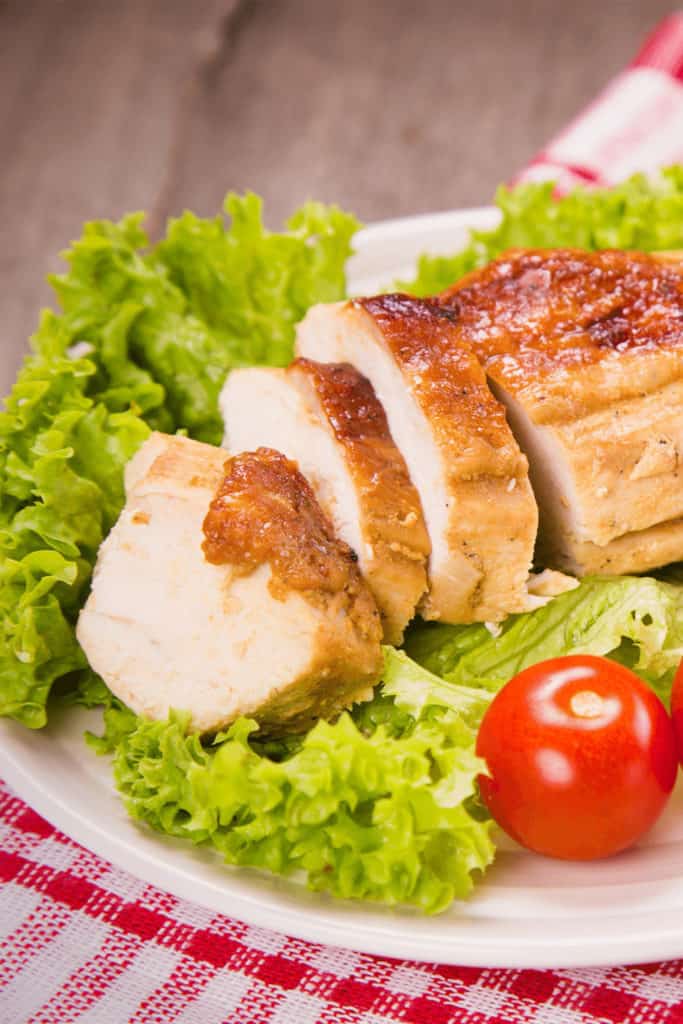
Why Preparation Matters
When it comes to how your chicken has been prepared, it can result in an increase in veins.
If you purchase chicken that was slaughtered in a way that caused a lot of bruising, you are more likely to see veins in the final product.
If you are cleaving your chicken before cooking it, you can also sever or alter veins.
As a result, once you cook your chicken you will see a bigger presence of veins.
Occasionally, overcooking can also cause your chicken to have a more prominent display of veins.
This exposes hemoglobin to higher temperatures and is more likely to alter it.
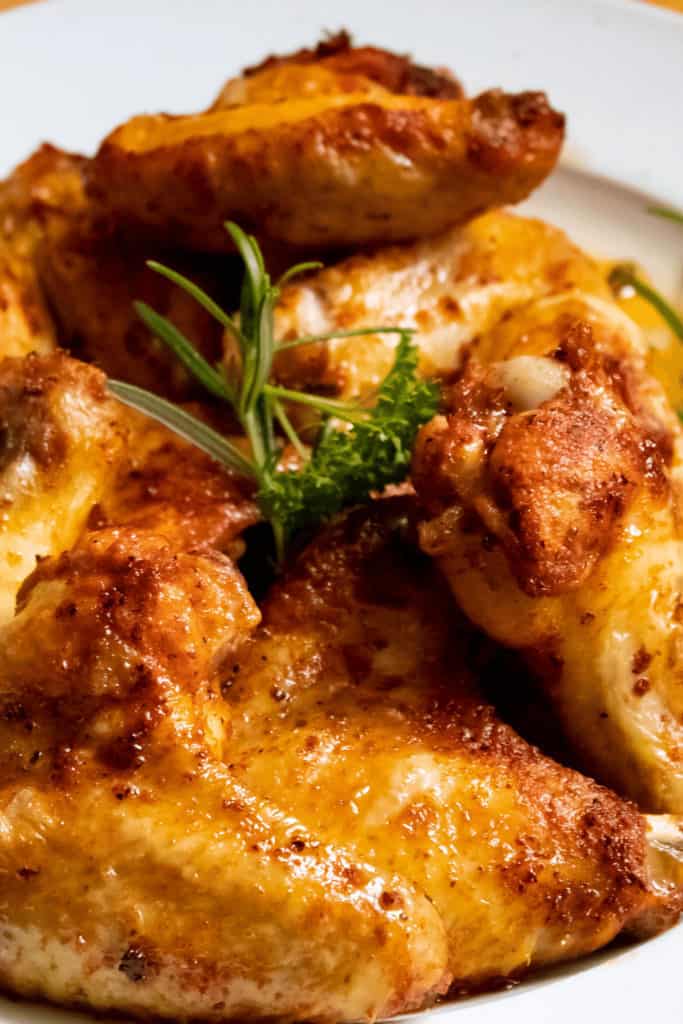
Frequently Asked Questions About Veins in Chicken
Do the veins in chicken have flavor?
One of the main misconceptions when it comes to veins in your chicken meat is that it will have a blood-like taste. When chickens are processed, all of the blood is drained from them. What you see when the veins change color is the remaining hemoglobin reacting to the cooking process. The veins do not have a different flavor from the rest of your chicken.
Can veins change the texture of your chicken?
Depending on how you’ve cooked your chicken, you may notice a slightly different texture when you eat the veins and tendons of your chicken. If your chicken has been overcooked, you might notice a slightly stringy texture.
Can I remove the veins from my chicken?
If you would prefer not to have veins in your cooked chicken, you can cut them out after cooking your chicken. However, this will not prevent the meat from taking on a certain color. Typically, if you want to remove the veins from your cooked chicken, you need to cut away the meat from around the bone. One of the easiest areas to remove the veins from your chicken is if it is in the drumstick, the vein is more pronounced.
Conclusion About Veins in Chicken
When you cook chicken, you can see a difference in the color of your chicken meat due to a reaction between the veins in chicken.
Even when your chicken is fully cooked to USDA standards, you still may see a pink or red color when your cut into your chicken.
This isn’t something that you should be concerned about, you can still safely eat chicken that has been colored due to the reaction in the veins.

